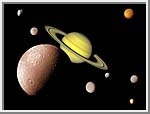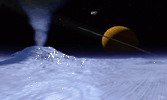

3
4
5
6
7
8
9
10
CNN
NBC
CBS
Reuters
A.P
ITN
BBC
NBN
Yahoo News
Particle Physics
Electromagnetism
Laser Research
Holography
Ion- Propulsion
Remember, you Saw it here First!

A New Twist to those whacky Protoplanetary Disks!
Protoplanetary disks, those enigmatic recently-discovered massive circular areas surrounding several mature & newborn stars, including the one on which our solar-system rides, have been theorized by scientists to have been formed by the excessive swirling of protoformulary gases surrounding the star during and after its ignition & birth.
SciMax, however, is advancing a new & more revolutionary theory concerning this incredible phenomena; one that brings a new twist to the origin Of solar-systems, and the importance of the disks in general.
Coming soon, a Scimax Original Theory,
An Alternative Theory of the Origin of the Protoplanetary Disk.
Copyright SciMax2000
Continued from Chapter1
There is ever-increasing evidence that suggests that the proplyd, or protoplanetary disk, the plane on which planets revolve around a star, is formed during the course of the birth of the star, and is actually a gradual process taking millions of years.
In summary, certain conclusions concerning the birth of a star and the formation of its surrounding solar-system may be advanced:
1. During the birth stage of a star, massive energy" bubbles" confined by gravity are emitted into the surrounding Universe, while also encasing the proto-star.
2. There energy-bubbles, or proto-bubbles, contain hot, excited gases, and fusionary & non-fusionary materials,which react together within the proto-bubble to form a single globular mass.
This globular mass is formed into a circular shape by the uniform pressures exerted upon it by the gravity-influenced gases within the proto-bubble.
As the gases within the bubble cool and are absorbed into the growing mass, along with all the protoplanetary materials, the proto-bubble begins to collapse into a two-dimensional disk.
3. Sometimes large clumps of fusionary material ejected during the formation of subsequent bubbles, break through the gravitational barriers between the bubbles and become lodged in the gravity-skin of older bubbles. Here they remain and attach themselves to each other to form mini-planets. As the bubbles cool and collapse, these mini-planets remain trapped within the gravity-wells and become satellites of the main planet of the respective bubble. A good example of this may be found in the moons of Jupiter, Saturn, Uranus & Neptune.
4.Each successive planet requires an additional bubble in order to form, thereby necessitating the phenomenon of bubbles within bubbles.
5. Usually, the larger planets would form within the outer bubbles, while the smaller planets. form in the inner bubbles.
6. Supposedly, the required constituents for life, including water, may be found on almost all planets, depending on the gases trapped within it and their constituent percentages, during the course of the planet's formation.
7.In the case of carbon-based life, the proper criteria for the growth and development of life on a planet depend on the following:
Proximity to its dedicated star.
Abundance of reservoirs of liquid water on the planet.
Activation temperature of life-constituents within the planet.
Environmental stability of territory surrounding the water.
8.Most, if not all planets found within a particular solar-system are therefore indigenous to that particular star & solar system, and could nothave been "imported" from some other system.
9.Asteroids could be clumps of matter imported from other systems within the Universe, that became trapped within the gravity-wells between the planets. They could als be the result of intra-solar collisions occurring eons ago.
10. Therefore loose asteroids either become trapped within a planet's gravity-well, or plummet into the planet, as in the case of the Shoemaker-Levy comet crashing into Jupiter. They do not, however, become planets over a period of time.
11.It is also possible that our own moon was not formed as the result of a collision of the Earth with a large asteroid, but might have been captured within Earth's proto-bubble's gravitational skin during the bubble-ejection stage of either Venus or Mercury.
12.It is further possible that the proto-bubbles did not partially dissipate, but merely collapsed to form a gravitational shroud surrounding the planets & star within, almost akin to an invisible gravitational bubble-wrap.
Please feel free to contact us to voice your comments on these theories.
Chapter2:The SciMax Bubble Star Phenomenon Theory
Summary of Theories
Sept 24 2000
Copyright SciMax2000.
Contact us at :[email protected]
